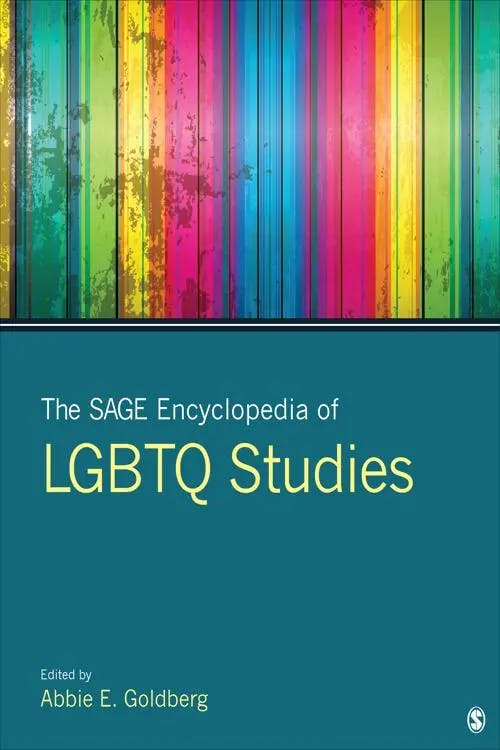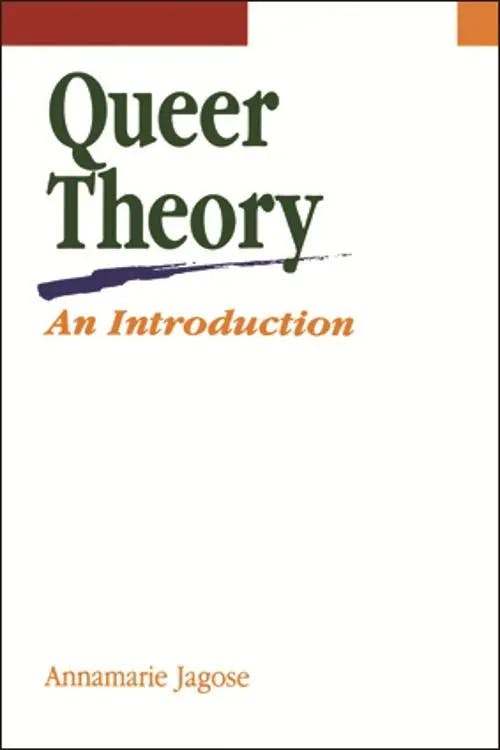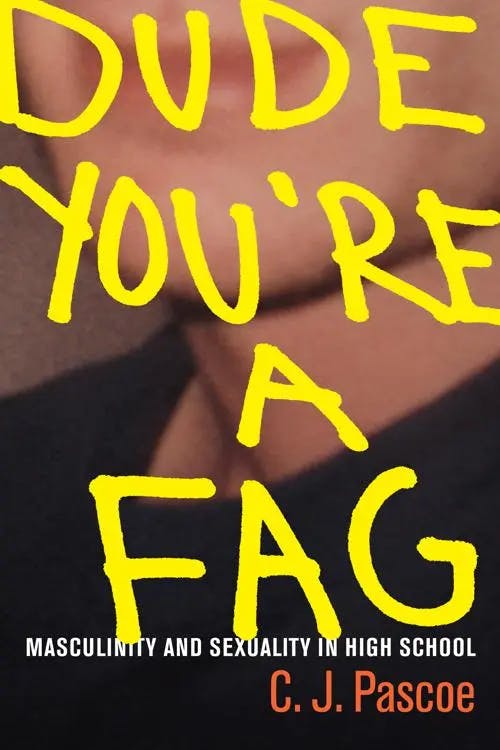What is Queer Theory?
MA, Gender Studies (London School of Economics & Political Science)
Date Published: 07.03.2023,
Last Updated: 19.07.2024
Share this article
Defining Queer Theory
Queer Theory has long been considered difficult to define. However, Jimmie Manning’s definition in The SAGE Encyclopedia of LGBTQ Studies (Goldberg, 2016) is a useful starting point. Manning states that Queer Theory is,
a collective term that engages multiple, and sometimes conflicting, viewpoints about sex, gender, and sexuality. Queer theory, much like the word queer itself, is an often-contested term that is used in different ways by multiple scholars and activists. (2016)
Abbie Goldberg
a collective term that engages multiple, and sometimes conflicting, viewpoints about sex, gender, and sexuality. Queer theory, much like the word queer itself, is an often-contested term that is used in different ways by multiple scholars and activists. (2016)
We will return to this definition later, but if we are to understand what queer theory is, we should also define the term ‘queer’. This term, ‘queer’, itself is broad – in fact, it could be referred to as an umbrella term, a term within which multiple identities exist. In What Does Q Mean? Including queer voices in qualitative research (2012), Levi & Johnson write that “queer theorists often hesitate to define the term queer, other than to say that it refers to non-normative sexuality.” The term queer was historically used as a slur against non-heterosexual individuals. Its meaning was reclaimed in the early 1990s when the AIDS Coalition to Unleash Power (ACT-UP) became known as Queer Nation. The idea was that this term- which implied being ‘not normal’- could belong to the people dehumanised by it.
Developing Understandings of Queer Theory
So if we were to imagine a ‘queer theory’, what might this look like? A theory which perhaps explains how gender and sexuality varies, and what that variation is influenced by? In Manning’s definition, he talks about multiple viewpoints being engaged under the “collective” term of Queer Theory. But if we are looking for one key text to help us make sense of this collective, where should we look?
Judith Butler’s Gender Trouble is the best place to start. If you really want to deep-dive this groundbreaking publication, our full guide to Judith Butler’s Theory of Gender Performativity is here. Gender Performativity is undoubtedly one of the most crucial concepts from Butler’s writing and helps inform our understanding of what Queer Theory is. Butler describes Gender Performativity as “the way in which the anticipation of a gendered essence produces that which it posits as outside itself” (1990). More simply, genders are not objective or universally defined. Our own expectations of what a gender ‘is’ informs how we behave, which thus creates gendered behaviour. Butler’s conception of gender ultimately argues that the experiences of being a “man” or a “woman” are neither clearly definable or applicable to the whole human population. Butler’s argument is that gender – as distinct from physical sex – is constructed through performance.
So, how does this relate back to Queer Theory? If performance grounds the way in which we enforce or reinforce a system of gender binary, then what about ‘non-normative’ identities? Effectively, we can deduce that what is ‘normative’, if gender is socially constructed, is just what has been agreed upon as ‘normal’. Queer Theory, at its core, challenges the notion that being heterosexual and/or cisgender is normal, or the human ‘default’.
Why is Queer Theory important?
Queer Theory is important because it equips us with the ability to critically assess wider social perspectives on topics such as gender and sexuality. It is not just about understanding how gender and sexuality affects society, but also about understanding why these ‘non-normative’ identities are stigmatised. In understanding the origins of stigma, we can address the underlying beliefs and assumptions which perpetuate said stigma.
Another notable text which helps us understand this is Annamarie Jagose’s Queer Theory: An Introduction (1996). In the chapter Theorising Same-Sex Desire, Jagose writes,
Heterosexuality, after all, has long maintained its claim to be a natural, pure, and unproblematic state which requires no explanation. Indeed, in so far as many attempts to ‘explain’ homosexuality are grounded conceptually on heterosexuality, there is a sense in which heterosexuality is assumed to be a neutral or unmarked form of sexuality per se. (1996)
Annamarie Jagose
Heterosexuality, after all, has long maintained its claim to be a natural, pure, and unproblematic state which requires no explanation. Indeed, in so far as many attempts to ‘explain’ homosexuality are grounded conceptually on heterosexuality, there is a sense in which heterosexuality is assumed to be a neutral or unmarked form of sexuality per se. (1996)
What is useful here is that Jagose articulates a tacit assumption that heterosexuality is both natural, normal and what is often expected of people. When one group of individuals are tacitly assumed to represent what is normal, individuals outside of that group will be considered inherently abnormal.
Let’s consider how the subject of what is natural manifests in social discourse around gender and sexuality. In Vincent & Howell’s (2014) ‘Unnatural’, ‘un-African’and ‘ungodly’: Homophobic discourse in democratic South Africa, the researchers explain how describing homosexual relationships as unnatural was inherently tied to “children and childrearing and which is associated with the non-procreational character of same-sex unions.” Because, as we saw in Jagose’s writing, heterosexuality is the presumed-neutral of sexualities, this means that activities such as child-rearing are considered a baseline for a normal relationship. What occurs in a heterosexual relationship is less likely to be challenged and scrutinized. Relationships, of course, develop for many reasons other than child-rearing; kinship, companionship, and mutual support (of emotional or even financial natures). To define heterosexuality as natural because procreation is possible is to define everything else as unnatural – particularly homosexual relationships.
When we believe that gender and sexuality are innate and unchanging facets of the self, it allows us to believe that what is common is normal, and what is normal is natural. When we believe that gender and sexuality are concepts which we have no influence in defining, individuals who exist outside the norm are treated at best, as anomalous. At worst, these individuals can be seen as a threat or even a perversion of nature. This natural/unnatural argument is harmful to gender and sexuality diverse individuals, but it also doesn’t stand up to scrutiny. This is preciely why Queer Theory is so valuable; because it allows us to challenge how the terms ‘natural’ and ‘unnatural’ are defined socially.
As such, Queer Theory explains the mechanisms underpinning how identities do (or do not) create space for one another within social systems and what the consequences of those systems can be. As a result, the application of Queer Theory can (and does) span across fields such as Psychology, Anthropology, Economics and many broader Human Sciences.
How does Queer Theory relate to other social theories?
Queer Theory is in many ways linked to Critical Race Theory. One of the key tenets of Critical Race Theory is that race is socially constructed; it is based on real and tangible factors but that what it means in society has been designed by people. We can easily see parallels here between Queer Theory’s standpoint on gender and Critical Race Theory’s standpoint on race. Both theories challenge ideas about what is natural, normal and innate to human identities- and confront systems of power which harm or marginalise people based on these ideas.
Facets of our identity such as race, gender and sexuality can also intersect and combine- creating unique lived experiences that influence how we are treated in wider society. This is the premise of Intersectional Feminist Theory, which originated from legal scholarship on the subject of Black women’s oppression. Intersectional Feminist Theory- often referred to as intersectionality- argues that when one’s race, gender, sexuality or other characteristics ‘intersect’, people can experience social privileges or struggles based on how those specific identities are valued in society. This ties into what Queer Theory teaches us about systems of power related to gender and sexuality, and many Intersectional Feminist theorists agree with the notion of gender as a social construct.
An example of Queer Theory in contemporary society
In understanding Queer Theory, it may be useful to look at how it has been applied to a contemporary social issue. In Dude, You’re a Fag (2011), American Sociologist CJ Pascoe conducted ethnographic research at a high school in the US- with the research designed to observe and investigate dynamics between the adolescent students. What emerged was a system of students policing one another’s behaviours based on the gender and sexuality related components perceived in their behaviour.
The name of the book comes from how regularly Pascoe witnessed male students refer to one another as “fags”- and very often this was a response to actions unrelated to sexuality. Pascoe found that boys referred to each other as fags for things like personal hygiene, caring about one’s appearance and expressing emotion. Race was intersectionally tied to this, as Pascoe found that Black male students didn’t use the slur of ‘fag’ to police the expression of their peers in the same way- and that this shaming of fellow students for perceived effeminate behaviour was most common amongst White male students.
Pascoe’s ethnography presents many examples of gender being tied to sexuality. In the chapter titled Look at my Masculinity! Girls who Act like Boys, Pascoe shares an example of a student connecting these two concepts together,
Much as they did with boys, youth at River High associated girls’ gender non-normativity with same-sex desire. When I explained to them that I was “writing a chapter on girls who do guy things,” Sarah (the aforementioned cheerleader) asked, “Oh, you mean lesbians?”. (2011)
C. J. Pascoe
Much as they did with boys, youth at River High associated girls’ gender non-normativity with same-sex desire. When I explained to them that I was “writing a chapter on girls who do guy things,” Sarah (the aforementioned cheerleader) asked, “Oh, you mean lesbians?”. (2011)
We can see here what we have previously discussed regarding queer theory and how gender is socially constructed. In this scenario, the student demonstrates their belief that gender is, at least in part, contingent on who you are attracted to. It shows an association of sexuality, not physical sex, with gender and gendered roles. This interaction is indicative of normalised perceptions of male (and often masculine) behaviour being innately heterosexual. It is also indicative of how women being attracted to other women is considered subversive and potentially un-feminine as a consequence. Based on Sarah’s convictions in this passage, we can assume that she perceives same-gender attraction as being outside of what is ‘normal’ for women and what is expected when performing womanhood.
In Pascoe’s ethnography we can begin to understand how, socially, sexuality is often tied to gender. Behaving in ways deemed not masculine enough was grounds for a boy to have his sexuality questioned; likely because of how social norms tie masculinity to heterosexuality. However, this publication also allows us to understand what Butler was describing in Gender Trouble. It conveys how gender is subjective to how we perform it, and expect it to be performed, as well as how social rules develop to determine what is acceptable behaviour for different gendered groups. Of these rules, Pascoe states,
Studying gender transgressions in adolescence provides empirical evidence to bolster and extend some of the claims of queer theory. (2011)
Queer Theory comprises many ideas and convictions but, crucially, it is about norms and “transgressions”, as Pascoe observes. Queer Theory allows us to better understand what is deemed acceptable and taboo in society, how those perceptions around gender and sexuality develop and how they can, in theory, be challenged and deconstructed.
Significant writers and theorists in the field of Queer Theory
Queer theory has often been best articulated through the work of queer-identifying scholars; Jack Halberstam is a prime example of this. Halberstam has written notably on transgender conceptualisations of the self and also writes on how queerness encourages a deconstruction of masculinity and femininity- as evidenced in his book Female Masculinity. Halberstam is one of the most successful queer theorists if you are looking for more specific writing on masculinity and transmasculinities. If we want to understand the origins of Queer Theory, however, the work of scholars such as Gloria Anzaldúa and Eve Sedgwick is essential. The Gloria Anzaldúa Reader and Sedgwick’s Performativity and Performance both allow readers to bridge the gap between modern conceptions of Queer Theory and this theory’s deep philosophical roots. Queer Theory was, ultimately, the convergence of concepts and ideas which emerged in the work of philosophers across the 19th and 20th Century. Anzaldúa and Sedgwick are two of the best examples of the scholars who made that convergence conceivable and material.
Queer Theory can come across as an intimidating topic- but its broadness is its greatest strength. Queer Theory provides us with the intellectual toolkit to challenge preconceived notions we might carry about the world around us. Its use as a framework for critical thought around the subject of gender & sexuality is undeniable and has many real-world applications- as is evidenced in Pascoe’s study. Through this theory that we can begin to understand systems of power that influence how people are assigned value based on their gender or sexual orientation. Hopefully, it can also be used to confront these structures of inequality and allow us to even conceptualise more egalitarian and inclusive approaches to how we understand what is ‘queer’.
Further Queer Theory Resources & Reading on Perlego
Gender, Sexuality & Subjectivity – Duane Rousselle
Queer Postcolonial Narratives and the Ethics of Witnessing – Donna McCormack
Deleuze and Queer Theory – Chrysanthi Nigianni and Merl Storr
Feminism is Queer – Mimi Marinucci
Bibliography
Butler, J. (1990). Gender Trouble. Routledge.
Goldberg, A. E. (Ed.). (2016). The SAGE Encyclopedia of LGBTQ studies. SAGE publications.
Jagose, A. (1996). Queer Theory: An Introduction. Melbourne: Melbourne University Press.
Levy, D. L., & Johnson, C. W. (2012). What does the Q mean? Including queer voices in qualitative research. Qualitative Social Work, 11(2), 130-140.
Pascoe, C. (2011). Dude, You’re a Fag (1st ed.). University of California Press.
Vincent, L., & Howell, S. (2014). ‘Unnatural’, ‘un-African’ and ‘ungodly’: Homophobic discourse in democratic South Africa. Sexualities, 17(4), 472-483.
MA, Gender Studies (London School of Economics & Political Science)
Georgie Williams is a deferred doctoral student in the field of Social Justice at University College Dublin and founder of gender & sexuality research hub, /Queer. Georgie’s research predominantly focuses on the development of gender and sexuality related social practices in post-colonial countries and the application of reflexive feminist methodologies to anthropological and sociological field research.



